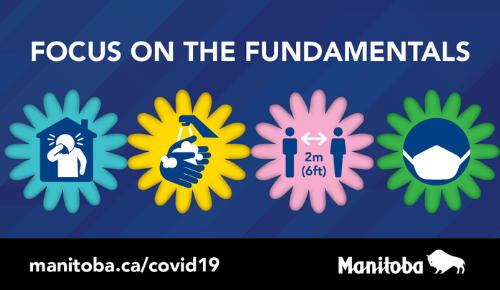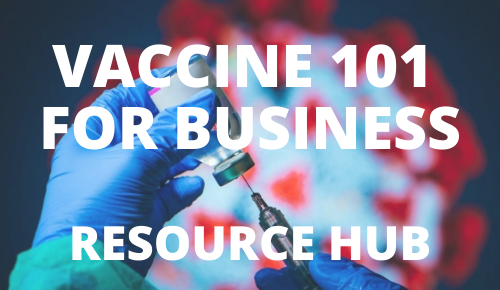
The Talent Opportunities Program (TOP) is an initiative of the Ontario Chamber of Commerce (OCC) designed to help employers located anywhere in Canada hire college and university students on work placements.
Employers hiring eligible students may receive a wage subsidy up to up to 50% of the wages (to a maximum of $5,000) for each net new placement or 70% of the wages (to a maximum of $7,000) for each net new placement for the following under-represented groups: Indigenous people, person with disabilities, newcomer, first year student, visible minority and/or women in STEM.
TOP brings together employers, students, post-secondary institutions and chambers of commerce from across Canada to create quality work-integrated learning (WIL) opportunities.
WIL is a term given to activities that combine education and practical workplace experience. WIL encompasses a variety of terms, such as co-operative education, internship, entrepreneurship, service learning, mandatory professional practicum / clinical placement, field placement, and work experience. For definitions of the various types of WIL, please visit the CEWIL Canada website.
WIL opportunities help to bridge the gap between formal post-secondary learning and the skill requirements of Canadian employers. Benefits for students include the opportunity to:
- Develop and improve technical and employability skills (i.e. strategic thinking, problem solving, teamwork)
- Gain work experience and connections to employers in fields related to academic studies;
- Acquire clarity on career path decisions; and
- Access higher earnings and employment opportunities upon graduation.
TOP provides eligible employers with wage subsidies to hire eligible post-secondary students for paid work experiences. Students benefit from quality work experiences related to their fields of study.
TOP is funded by the Government of Canada’s Student Work Placement Program (SWPP).
How the Program Works
TOP is administered by the OCC in partnership with the Canadian Chamber of Commerce, Alberta Chambers of Commerce, Fédération des chambres de commerce du Québec, along with other regional and local chambers of commerce.
In partnership with post-secondary institutions, TOP:
- Provides wage subsidies to employers that offer quality student work placements;
- Creates recruitment opportunities to match students to the right placements; and
- Convenes educators and employers to help align post-secondary education curricula to the skills needs of industry.
Wage Subsidy Overview
Eligible employers hiring eligible students may receive a wage subsidy for each placement. Any funds awarded must be used exclusively to support the wages of the student. The total value of the subsidy is calculated as follows:
- 50% of the wages (to a maximum of $5,000) for each net new placement; or
- 70% of the wages (to a maximum of $7,000) for each net new placement for the following under-represented groups: o Woman in STEM: Woman registered and studying in science, technology, engineering and mathematics (STEM) fields.
- Indigenous people: People who reported identifying with at least one Aboriginal group, that is, First Nations, Métis or Inuit, and/or those who reported being a Treaty Indian or a Registered Indian as defined by the Indian Act of Canada, and/or those who reported they were members of an Indian band or First Nation.
- Person with disabilities: An individual who has a difficulty or impairment due to a long-term condition or health problem and/or experiences a limitation in their daily activities.
- Newcomer: Immigrants who immigrated within the last 5 years.
- First-year student: Students registered in the first year of their program at a post-secondary institution.
- Visible minority*:
- Black;
- South Asian (e.g., East Indian, Pakistani, Sri Lankan);
- Filipino;
- Arab;
- Latin American;
- Southeast Asian (e.g., Vietnamese, Cambodian, Laotian, Thai);
- West Asian (e.g., Iranian, Afghan);
- Korean; Japanese; and
- Other group.
* Note: The increased subsidy for the visible minority group is effective January 1, 2021.
The final subsidy amount will be calculated by the OCC and will be determined at the end of the placement term upon receipt of all supporting documents. This shall include a final accounting of each placement’s actual length and total wages paid to the student (i.e. pay stubs). The OCC shall have the right to deny payment should the employer fail to provide all required information and documents to the satisfaction of the OCC. All payments provided by OCC shall be considered final.
Placements can be partially government-funded from non-federal sources, but only funds from non-governmental sources can be subsidized under this program (for example, a position paid with 60% provincial grant funding is only eligible for a subsidy on the 40% of the non-governmental funds). Employers must disclose if and by how much a placement is being partially funded by other government sources.
Employers may only benefit from a subsidy once per placement, may not receive funding for the same placement from more than one SWPP funding partners, and will not collect the subsidy in a way that results in a net financial benefit or profit.
Program Eligibility
Employers are:
- A registered Canadian business or not-for-profit organization located anywhere in Canada. Some exclusions apply. Please see below for a list of exclusions.
- Committed to paying the student in full for the duration of the placement (the wage subsidy will be administered after receiving all supporting information and documents, including pay stubs, at the end of the placement term).
- In compliance with all federal, provincial and territorial human rights and labour legislation, regulations, and any other relevant standards, such as the Occupational Health and Safety Act and the Employment Standards Act in Ontario, and any similar legislation in other jurisdictions.
- Covered by Workplace Safety and Insurance Board (WSIB) or alternate workplace insurance.
- Only submitting applications for placements that are not subsidized by the federal government under another funding program.
Exclusions:
- Federal, provincial, territorial or municipal governments. Organizations which are extensions of a federal, provincial, territorial or municipal government, such as crown corporations, hospitals, and post-secondary institutions are generally not eligible.
- Major financial sector employers (see FAQs for more information).
- Please note that this list of exclusions may not be exhaustive. The OCC reserves the right to amend eligibility criteria at our discretion.
Students are:
- Registered as a domestic student in a recognized Canadian post-secondary institution.
- Canadian citizens, permanent residents, or persons to whom refugee protection has been conferred under the Immigration and Refugee Protection Act.
- Legally entitled to work in Canada in accordance with relevant federal, provincial or territorial legislation and regulations.
- Registered in a program or course with a WIL component as part of their study plan.
- Registered in a full-time or part-time program in any field of study.
Placements:
- Placements must be ‘net new’ to qualify for funding (i.e. incremental positions over and above what employers were able to hire in the prior federal fiscal year). Please refer to the question-and-answer section of the handbook for a detailed explanation.
- Full-time or part-time positions.
- The student must be on the employer’s payroll (contractors are not eligible).
- Work from home placements are eligible.
- Apprenticeships in a skilled trade are not eligible.
- Where the employer is a post-secondary institution, research positions are generally not eligible for TOP. Please contact us for clarification.
- Wages covered by a wage subsidy cannot be counted toward any tax credits. It is the employer’s responsibility to follow their provincial tax credit guidelines and consult a tax professional.
- Placements can be partially government-funded from non-federal sources, but only funds from non-governmental sources can be subsidized under this program (for example, a position paid with 60% provincial grant funding is only eligible for a subsidy on the 40% of the non-governmental funds). Employers must disclose if and by how much a placement is being partially funded by other government sources.
How to Apply:
Applications may be submitted through the online portal at http://occ.magnet.today/
For More Information contact the Ontario Chamber of Commerce directly: mailto:top@occ.ca.
Please refer to the TOP Handbook for more information about the program and the application process. Please review the TOP Handbook prior to starting an application.




